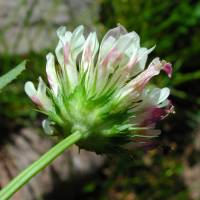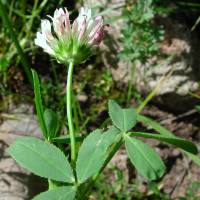Duration: Perennial
Nativity: Native
Lifeform: Forb/Herb
General: Small, leafy herb, sparsely pilose, to 50 cm long.
Leaves: Trifoliate leaves, leaflets oblanceolate to ovate, with a rounded, squared, or broad tips, margins finely toothed, stipules lanceolate with long, pointed tips, 8-20 mm long.
Flowers: Generally more than 10, in dense globose heads greater than 10 mm, corollas 8-11 mm long, red, purple, pink, or white, persistent, involucres cleft nearly to the base, the heads 10-20 mm wide, the peduncles often pubescent.
Fruits: Small, terete pods with few seeds, indehiscent.
Ecology: Found in moist soils and wet areas in coniferous forests and along streams from 6,500-9,000 ft (1891-2743 m); flowering June-October.
Notes: Look for this species under Trifolium pinetorum. The key to this species is the long-attenuate stipules.
Ethnobotany: The plant was used for medicine, the leaves were used as greens, and to make a cold tea, and the roots were steamed, boiled, or roasted and used as food.
Synonyms: Trifolium mucronatum, Trifolium pinetorum, Trifolium willdenovii, many others see Tropicos
Editor: LCrumbacher, 2011
Etymology: Trifolium means from the Latin meaning "three-leaved", while wormskioldii refers to Morten Wormskjold (1783-1845), a Danish botanist who led a naval expedition to Greenland in 1813 and made the first major collection of Greenland flora there.





